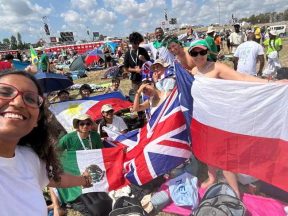Republic of Panama. The Hub of the Americas.
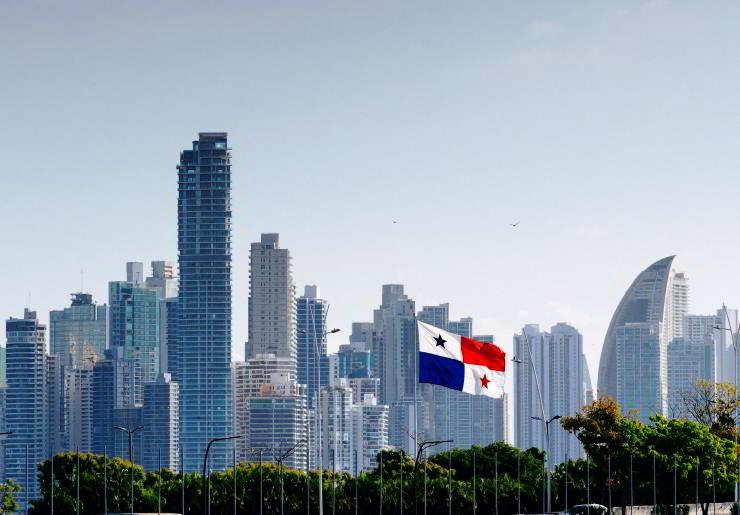
The geographical location gives the country considerable strategic importance. The Panama Canal. The migration crisis. The challenges of the new president
The Republic of Panama constitutes the last section of the isthmus of Central America, as well as a link between different realities and geographical areas. In fact, it is bordered to the north by the Antilles Sea and to the south by the Pacific Ocean, while to the east it borders with Colombia, and therefore with the area of the South Latin American cone, and to the west with Costa Rica.
Its territory, with a rather small size of 75,517 km², is fragmented and predominantly mountainous criss-crossed by chains of volcanic origin which are the continuation of the Costa Rican cordillera with altitudes above 3,000 meters in the western part and around 2,000 meters in the east. There are also flat areas of modest extension, which open both to the Pacific and the Atlantic. The country has a considerable coastline of 2,988 km, rich in inlets, gulfs, peninsulas and islands. Regarding the latter, among the largest we have Coiba, Isla del Rey and Cébaco located in the Pacific Ocean, while on the Atlantic side we find the archipelago of Bocas del Toro. In addition, the country is rich in rivers, but lacks lake basins of natural origin, while the equatorial climate is characterized by high rainfall, particularly on the Caribbean side.
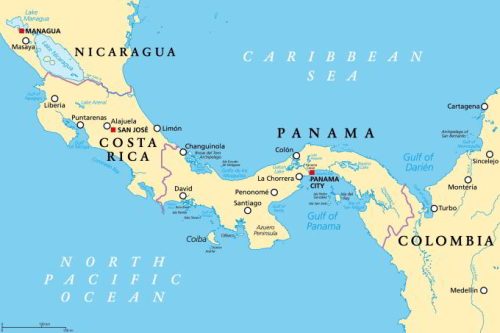
Map of Panama. Illustration: Peter Hermes Furian. 123rf
Its geographical location gives the country considerable strategic importance, but also a mix of cultures and ethnic groups that had already formed before the arrival of the conquistadors who, understanding the value of its position, made Portobelo one of the major commercial ports. This importance grew immeasurably with the opening of the Panama Canal in 1914, which generated a real revolution in global traffic and which still today constitutes one of the major choke points at an international level. The changes produced by the Canal were such that, in the world of logistics, the Panamax unit of measurement was introduced indicating the classes of ships whose dimensions were compatible with those of the canal (295 m long, 32.2 m wide and 13, 5 m draught) and, therefore, able to cross it. The early twentieth century, in which this important infrastructure was created, were the years in which President Roosevelt was experimenting with his imperialistic projection into the area of Central America through the installation of a naval base in Cuba, which occurred following the Spanish defeat, and the establishment of the State of Panama which separated from Colombia precisely for issues relating to the Canal the strategic importance of which Roosevelt himself understood, also in light of the very rapid development experienced by California during those years.
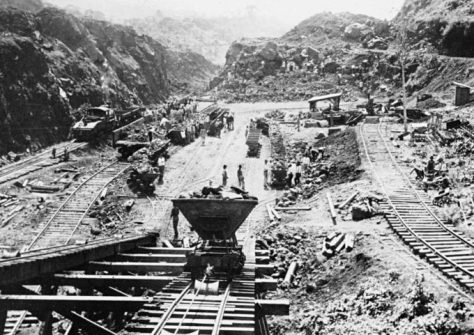
Excavation and removal of dirt at the Culebra Cut, Panama Canal, 1907. Archive
At first, Colombia started the construction by entrusting the work to a French company which, due to technical difficulties, was unable to proceed with the work and went bankrupt. From the ashes of this company a new one was born, which was also doomed to failure. It was at this juncture that the United States took over the operation by stipulating with the Colombian diplomatic representative in Washington, in January 1903, a rental contract for a strip of territory between the two oceans which would have allowed them to build the Canal and some fortifications. But in August of the same year the Colombian Senate refused to ratify this contract, thus pushing the White House to support, even militarily, the Panamanian independence oligarchy that led the country to independence, achieved on 4 November 1903. The construction of the new state took place in a climate of peace between the conservative and liberal parties, a harmony symbolized in the national flag which surrounds the blue of the conservatives and the red of the liberals in white. As soon as it took office, the government of the Republic of Panama proceeded with the signing of the contract to lease the territory to the United States – the famous Hay – Bunau-Varilla Treaty – which, in exchange, gave the newly formed Republic 10 million dollars, plus an annual subsidy of 250 thousand dollars, and guaranteed independence from possible Colombian attacks.
Thus, in 1904, the US military engineers undertook the work of the Canal and concluded it ten years later. The new infrastructure ensured Washington a hegemonic position in Latin America, but also control of the interoceanic mercantile routes, allowing it to establish itself as a guarantor of trade between the great powers.
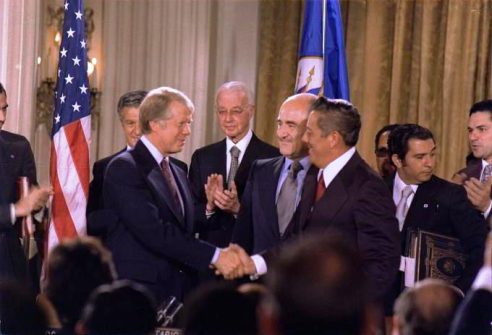
US President Jimmy Carter shakes hands with General Omar Torrijos after signing the Panama Canal Treaties (September 7, 1977). Photo: White House
During the following decades, however, this condition aroused ire and hatred on the part of the local population to the point of causing the outbreak, in 1964, of a bloody revolt organized by activists who, in the wake of what had already happened in Egypt, were pushing for the nationalization of the Canal. The level of the protests was such that it pushed the United States to start negotiations to redefine the status of the infrastructure even if internal and regional events slowed down the course of the negotiations which reached a conclusion after a decade, with the signing of the Torrijos-Carter treaty of 1977 signed, in fact, by the presidents of Panama and the United States. Therefore, Washington committed to abandoning control of the Canal in 1979, while remaining the guarantor of defence and non-interference in the neutrality of the management of the infrastructure. Another crucial episode in the history of the country was the coming to power in 1983 of General Noriega, former head of Panamanian intelligence.
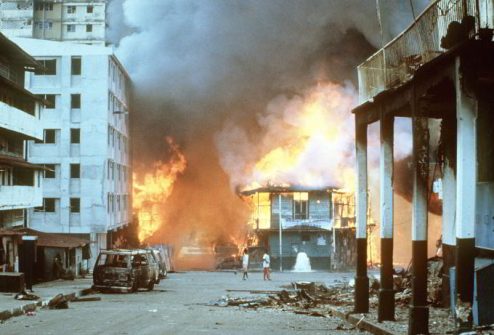
Buildings engulfed in flames following the U.S. invasion of Panama, December 1989. US. National Archives.
The General was a corrupt character involved in drug trafficking, but at that moment he was useful to the US cause in terms of supporting the Nicaraguan Contras fighting against the Sandinista government. But in 1989, following his non-reconfirmation in the presidential elections, he decided to cancel the elections and still maintain power. At that point the United States, which was nevertheless projecting itself towards a new geopolitical era following the fall of the Soviet Union, intervened by force to depose the inconvenient ally, replacing him with the winning candidate Guillermo Endara. In the opinion of authoritative analysts “the invasion of Panama was a true ad personam invasion, in the sense that the declared and official objective was not so much the overthrow of the regime, but rather the neutralization of its dictator, Manuel Noriega”. The Operation, called Just Cause, caused hundreds of victims – according to some sources up to 3000 – and led to the abolition of the Panamanian army while, in 1999, as foreseen by the 1977 agreements, the canal zone returned to Panamanian control and US troops withdrew from the territory. (Open Photo: Skyline of Panama City skyscrapers with the flag of Panama in the foreground. Shutterstock/Walter Otto).
(F.R.)



